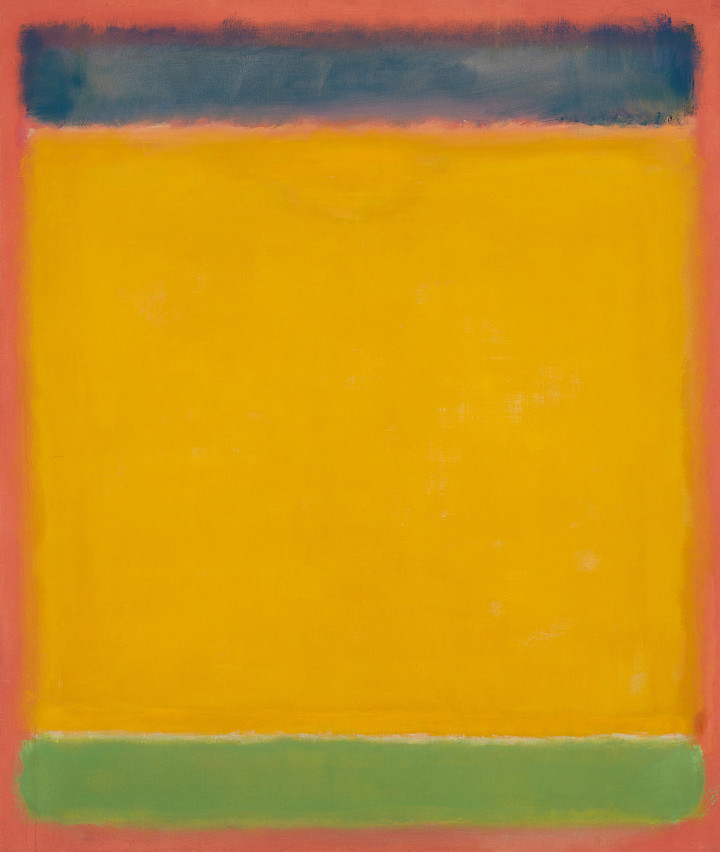Ways of Freedom: Jackson Pollock To Maria Lassing

Ways of Freedom: Jackson Pollock To Maria Lassing
Words by Billy De Luca

Untitled (Blue, Yellow, Green on Red), 1954
Whitney Museum of American Art, New York © 2022.
Digital image Whitney Museum of American Art / Licensed by Scala © Kate Rothko Prizel & Christopher Rothko
Image: Bildrecht, Wien, 2022
Source: Albertina Modern Press
The Albertina Modern opened its doors recently for its new exhibition, Ways of Freedom: Jackson Pollock To Maria Lassing.
It was a grey, clouded and wet morning—But what better time to go to a museum? What was presented before me was an amalgamation of thirty-eight artists, with over 100 works sprawled on display. Each artist reflects an interplay with colour, form, and creativity. The exhibition showcases this through the dialogue between Abstract Expressionism and Informalism post-WWII. A dialogue that, at the time, was pitted against the verismo of communist art of the era. The exhibit showcases their ultimate success, one that pushed freedom and creativity out to a world that needed a respite from the terror and squalor of the past two decades.

Vertikalgestaltung, 1951
The ALBERTINA Museum, Vienna – The ESSL Collection
Image: Photoatelier Laut © Arnulf Rainer
Source: Albertina Modern Press
Rothko, Pollock, Motherwell, Elain and Willem De Kooning, Krasner and more have travelled across the Atlantic to meet with their European counterparts. The victory over fascism in Europe, and the events which caused its reckoning, catalysed a reaction from this new generation of artists. Their art was informal, subjective, and questioned the demoralised and terrorsome capabilities of the world at the time. They looked away from the surreal and geometric styles that defined the art world pre 1939. Instead, they depicted expressions irreproducible by the silkscreen and darkroom of photography. It would be impossible to convey, in painting form, the desolation and poisonous extremes of experience following the release of war images captured in the camps and trenches. Palette and paintbrush would be unable to reproduce such a precise and visceral image of reality. As such, abstraction became a visual language that produced an alternate sight, an alternate world with alternate symbols, methods and techniques. A place where imprecise actualities stood alongside the horrors of history.

Enchanted Forest, 1947
Peggy Guggenheim Collection, Venice | David Heald © The Solomon R. Guggenheim Foundation © Pollock-Krasner Foundation / Bildrecht, Wien 2022
Source: Albertina Modern Press

Quo Numine Laeso, 1959
ALBERTINA, Wien - Leihgabe E. Ploil
Image: Bildrecht, Wien 2022
Source: Albertina Modern Press
The anxieties of the new world are seen to be taken through the thick paint of Willem and the slashed strokes of Elaine De Kooning, along with a web of dripped paint is poured on by Pollock. Gestural shapes are ingrained by Bischoffshauen. Contrasting colours are powdered onto canvas by Frankenthaler, while Alfons Schilling’s annular canvases float on the wall, almost turning as eyes flicker by. The light touch of Morris Louis shades his brilliant orange background with a sheen of black like a billowing curtain. Just as meticulously, Arnulf Rainer’s hand sears like fire over his canvases, streaking black over thin streaks of light and hue. Green paint vinculates through a Lassnig canvas and soft rectangles read as blue sky and green plains, cut by a yellow block of the horizon, forming a Rothko—as meditative and fundamental as a breath.

Bald Eagle, 1955
ASOM Collection © Pollock-Krasner Foundation
Image: Bildrecht, Wien, 2022
Source: Albertina Modern Press

April Mood, 1974
ASOM Collection © Helen Frankenthaler Foundation, Inc.
Image: Bildrecht, Wien, 2022
Source: Albertina Modern Press
Abstaining from the excruciating face of formalist structures, the exhibition showcases a panoply of life, one that reaches a sense of space and air and thought. This was well needed when the works were conceived and remain vital even now. Whether it is the size of Pranchensky’s ten-metre-wide red canvas, the direct intensity of Hermann Nitsch’s flow of sanguine paint, or the weight of Motherwell's shapes, the Albertina Modern displays more than just an exhibition. It marks a celebration of the individual over the constraints of the past and reflects a symbol of artistic endeavour. A symbol grown from Western shores and developed internationally. The transatlantic minds engage in shaping equally great artworks. A great unfurling of artistry is shown in the daring of a modern hand in a modern world.
Ways of Freedom will be on show until 22nd January 2023.
For more information, visit: www.albertina.at/en/albertina-modern
OPEN HOUSE: A NEW ERA
By Alexia Petsinis
Nan Goldin's The ballad of sexual dependency
By Jasmine Penman
The Institute of Modern Art Presents: Jenn Nkiru - REBIRTH IS NECESSARY
By Rachel Weinberg
Julian Klincewicz Sees No Moment But Now
By Claire Summers
GARETH MCCONNELL on MASKS, TRANSFORMATION and COMMUNICATION
By Annabel Blue
Ramesh Mario Nithiyendran: The Guardians
By Sarah Buckley